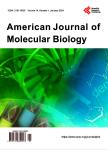Characterization of winged bean (<i>Psophocarpus tetragonolobus</i>(L.) DC.) based on molecular, chemical and physiological parameters
Characterization of winged bean (<i>Psophocarpus tetragonolobus</i>(L.) DC.) based on molecular, chemical and physiological parameters作者机构:CSIR-National Botanical Research Institute Rana Pratap Marg Lucknow Uttar Pradesh India National Bureau of Plant Genetic Resources Regional Station Akola Maharashtra India Sanjay Gandhi Institute of Post-Graduate Medical Sciences Lucknow Uttar Pradesh India University of Lucknow Lucknow Uttar Pradesh India
出 版 物:《American Journal of Molecular Biology》 (美国分子生物学期刊(英文))
年 卷 期:2013年第3卷第4期
页 面:187-197页
学科分类:1002[医学-临床医学] 100214[医学-肿瘤学] 10[医学]
主 题:Psophocarpus tetragonolobus Polyphenols Flavonoid RAPD ISSR Physiological Parameter
摘 要:Winged bean (Psophocarpus tetragonolobus (L.) DC.) is a potential legume crop of the tropics with high protein and oil content in the seeds. Analysis of the mutual genotypic relationships among twenty four genotypes of P. tetragonolobus through Mantel test found a significant correlation (r = 0.839) between similarity matrices of the results obtained from the use of the RAPD and ISSR molecular markers. The UPGMA tree based on Jaccard’s similarity coefficient generated from their cumulative data showed two distinct clusters and seven sub-clusters among these accessions. Quantification of total polyphenols, flavonoids and tannin revealed the highest percentage of occurrence of kaempferol (1.07-790.5 μg/g) and the lowest percentage of gallic acid (0.09-3.49 μg/g) in the seeds. Phytochemical analysis of the winged bean genotypes revealed that, some of the exotic lines are distinct. Analysis of photosynthesis rate, photosynthetic yield and stomatal conductance data also showed two clusters and was in congruence with the phytochemical affinities of the genotypes. The overall high level of polymorphism and varied range of genetic distances across the genotypes revealed a wide range of genetic base of P. tetragonolobus. The present investigation therefore, has provided significant insights for further improvement of winged bean germplasm for its qualitative and quantitative traits.



